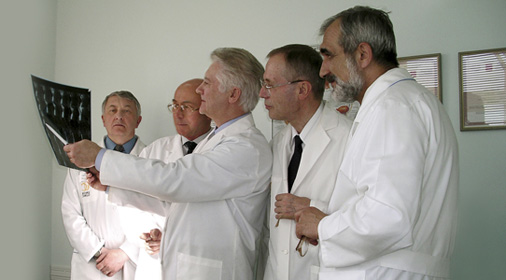In clinical practice, doctors personally assess patients in order to
diagnose, treat, and prevent disease using clinical judgment. The
doctor-patient relationship typically begins an interaction with an examination of the patient's
medical history and
medical record, followed a medical interview
[30] and a
physical examination. Basic diagnostic
medical devices (e.g.
stethoscope,
tongue depressor) are typically used. After examination for
signs and interviewing for
symptoms, the doctor may order
medical tests (e.g.
blood tests), take a
biopsy, or prescribe
pharmaceutical drugs or other therapies.
Differential diagnosis methods help to rule out conditions based on the information provided. During the encounter, properly informing the patient of all relevant facts is an important part of the relationship and the development of trust. The medical encounter is then documented in the medical record, which is a legal document in many jurisdictions.
[31] Followups may be shorter but follow the same general procedure.


